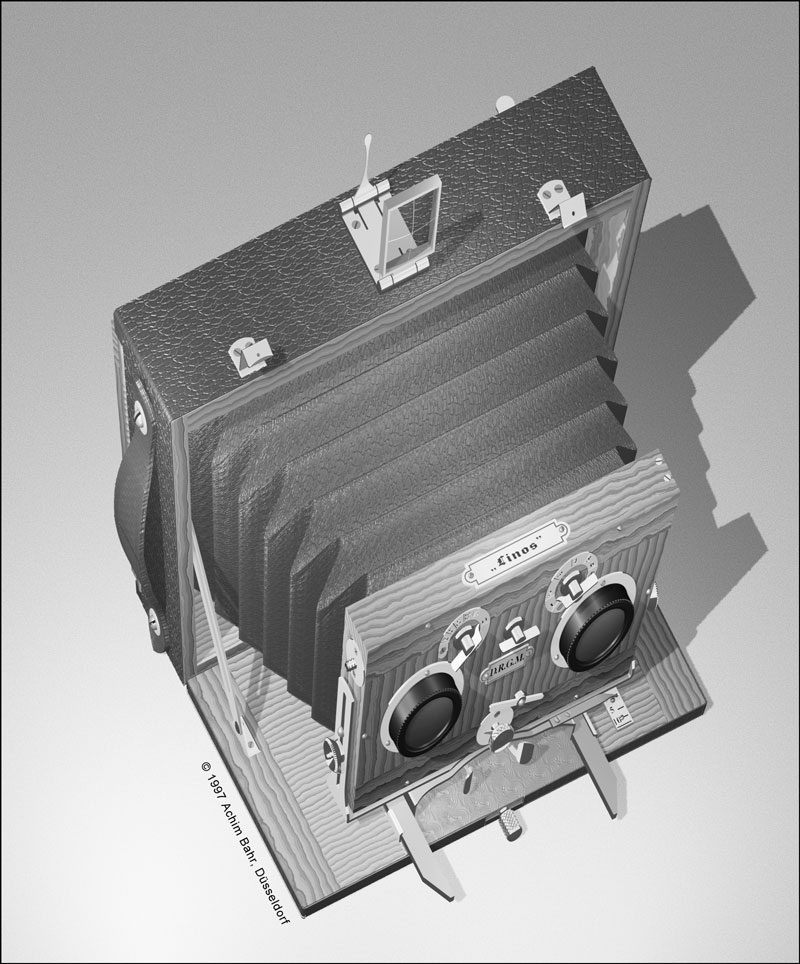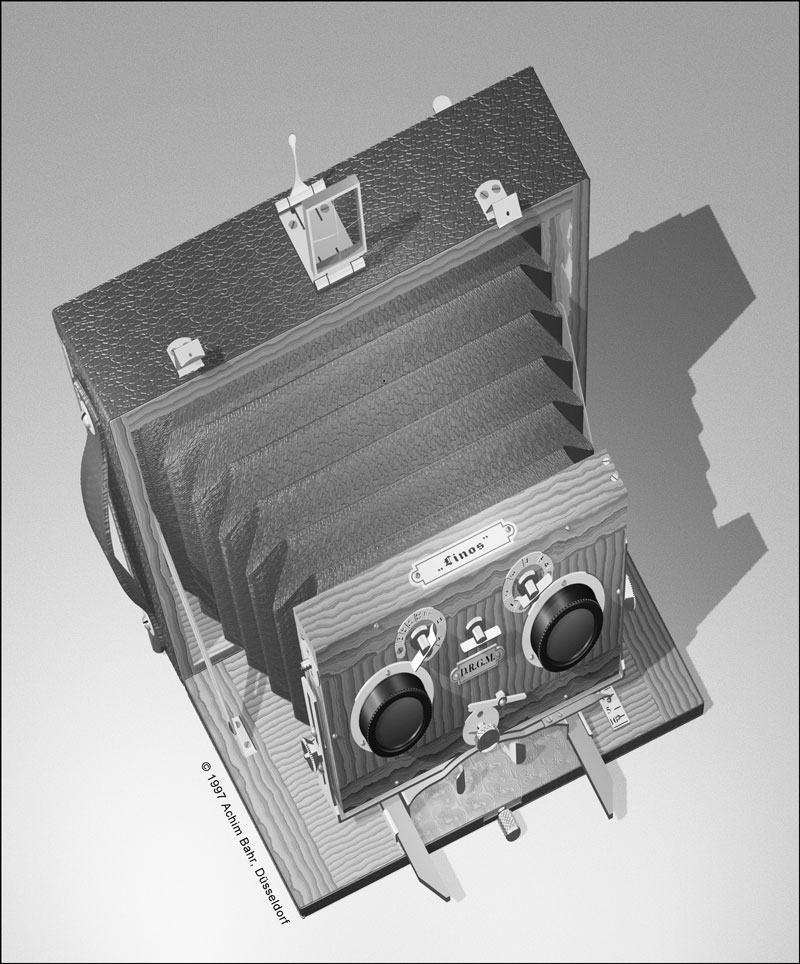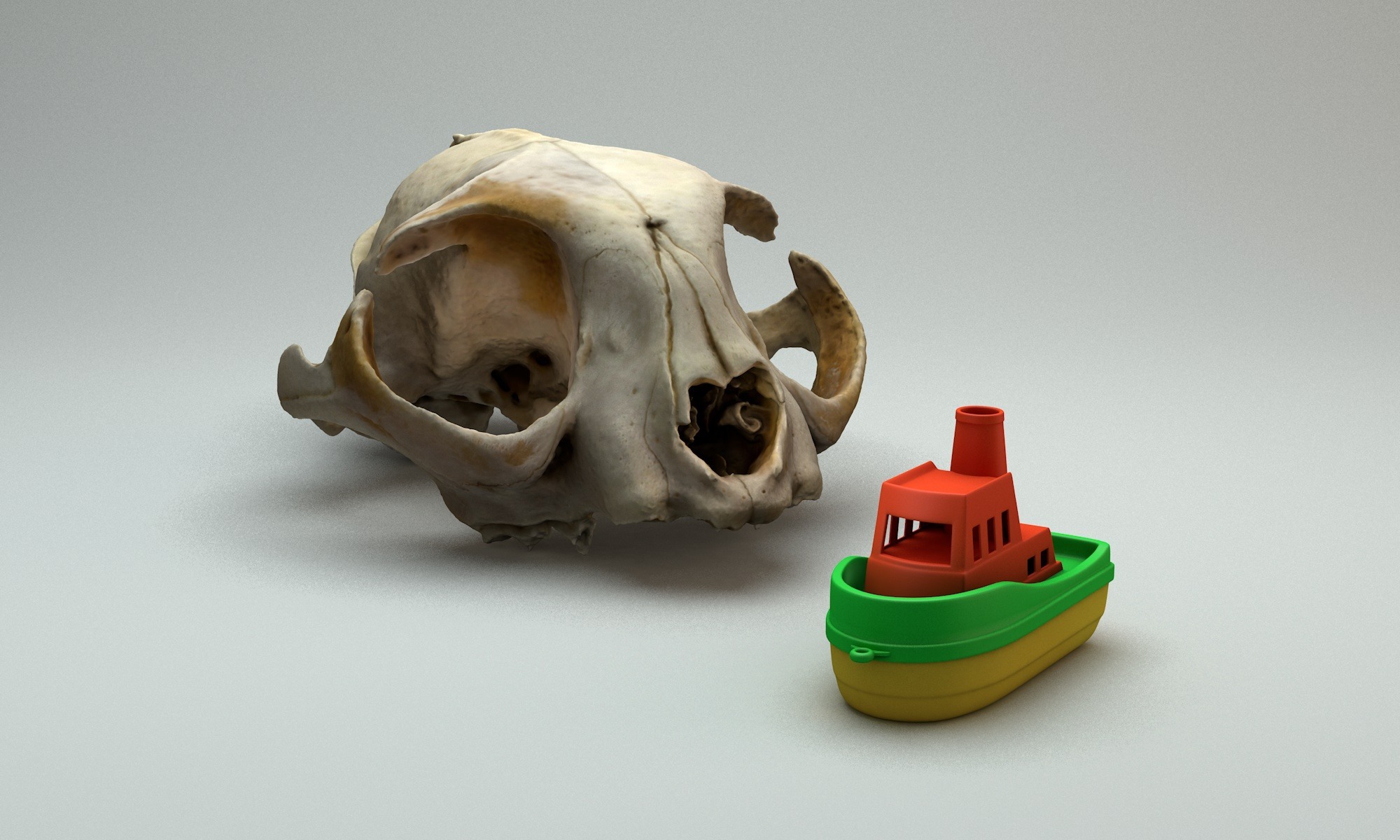


Two eyes do see more than one.
There are various methods for viewing stereoscopic picture pairs, but by far the most popular one is the use of anaglyphs. Everyone knows the famous 3D-glasses with their typical red and green filters which almost became synonymous with the idea of stereoscopy itself.
Compared to the general fame of anaglyphs, oddly enough many enthusiasts and connoisseurs of three-dimensional pictures have a low opinion of this method. They seem to ignore the fact that just this technique made it possible to show stereo slides and — later on — also stereo movies not only to one single person but to a large audience at the same time.
Continue reading “Anaglyphs”Um den besonderen Effekt dieser dreidimensionalen Ansicht von Neuschwanstein hervorzurufen, legt man das Bild zunächst waagerecht vor sich. Man hält den Rotfilter der Farbbrille vor das linke und den Grünfilter vor das rechte Auge und betrachtet das Bild aus einem schrägen Blickwinkel von ca. 45°. Es wird richtig gesehen, wenn die Darstellung sich aufrecht und gerade aus der Bildfläche erhebt. Der höchste — achteckige — Turm erscheint dann etwa 11 cm groß.
Continue reading “Neuschwanstein • 3D”To cause the exceptional effect of this three-dimensional view of Neuschwanstein first of all you lay the picture horizontally in front of you. Holding the red filter of the color spectacles to the left eye and the green filter to the right one, you observe the image from a diagonal angle of about 45°. It is correctly seen when the representation raises straight upright out of the plane. The tallest — octagonal — tower then roughly measures 11 cm.
Continue reading “Neuschwanstein • 3D”